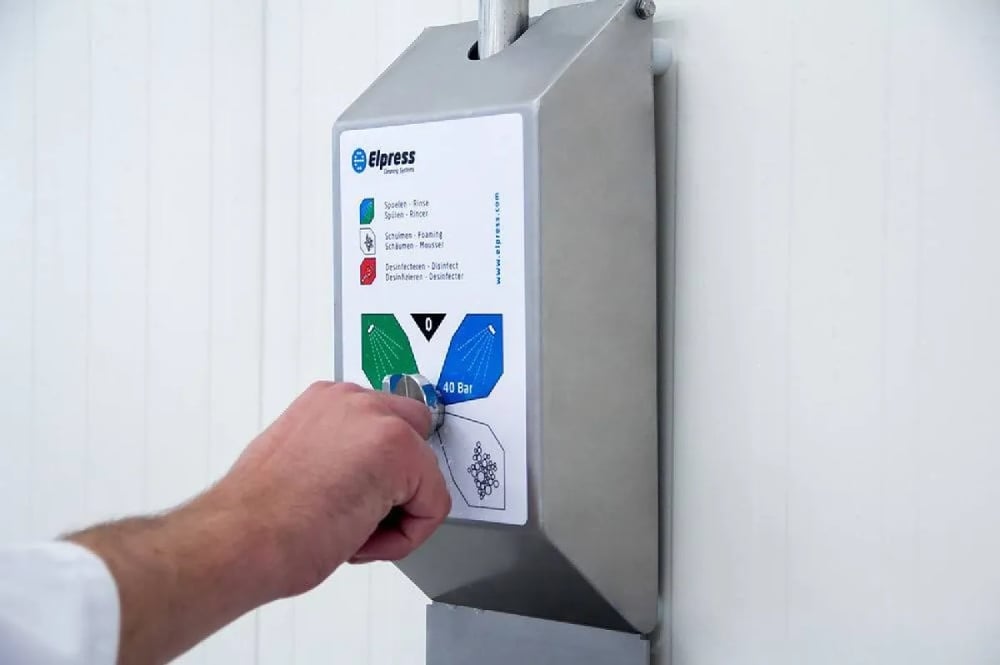7hwxwR.webp?width=1200&height=300&name=tmpBanner_Reinigen%20(1)7hwxwR.webp)
Manual cleaning, in other words cleaning by hand, involves cleaning equipment, tools and surfaces without resorting to fully automated cleaning systems. In an industrial context, manual cleaning remains crucial for specific tasks requiring precision, flexibility and the cleaning of hard-to-reach places. Although more and more fixed and automated solutions are available, manual cleaning still plays an important role in sectors where automation is less suitable. Open our brochure or selection plan below to read more.
A centralised configuration makes use of a single centralised system for cleaning several production areas, while a decentralised configuration uses separate systems to clean specific areas. Both methods have their pros and cons, depending on the existing infrastructure and the specific cleaning needs of the business.
A centralised configuration can be cost-effective for large companies with lots of cleaning points, while a decentralised configuration offers greater flexibility for smaller or more specialised cleaning processes. When deciding which of these two methods to use, remember to take your company’s infrastructure and your specific cleaning needs into account.
Read more about centralised or decentralised configurationsIn the case of decentralised cleaning, the cleaning chemicals are available at every individual satellite. Water is supplied under pressure via a network of pipes. At the satellites, the necessary chemicals are added and used for rinsing, foam cleaning or disinfecting.


In the case of centralised cleaning, there is one central location where the chemicals are stored and where a foam and/or disinfection unit is installed. Pressurised water and pre-dosed cleaning agents are transported to the production areas via a network of pipes. In the production area, you can choose between rinsing, foaming or disinfecting via satellites.


Manual cleaning offers a combination of accuracy and adaptability. Manual cleaning is essential in many industrial environments, especially where small, delicate or hard-to-reach parts are present. Manual cleaning offers the following advantages:
Manual cleaning plays an important role in various industries, where flexibility and precision are top priority. Despite the rise of automated cleaning systems, manual cleaning is still required in certain sectors. Each sector has its own cleaning requirements, and manual cleaning methods are often used in situations where accuracy, accessibility and specific hygiene requirements are important.
Sustainable and efficient Manual industrial cleaning not only optimises the cleaning processes, but also improves workers’ well-being. Innovative technologies such as advanced nozzles and ergonomically designed equipment make the cleaning process both more environmentally friendly and less stressful physically.

Regular maintenance is critical for the efficient operation of both manual and automated cleaning systems. A service contract from Elpress offer periodic maintenance in order to extend the service life of your cleaning system and ensure maximum efficiency. Preventive maintenance reduces breakdowns and ensures that equipment operates reliably.
